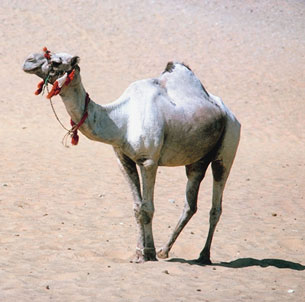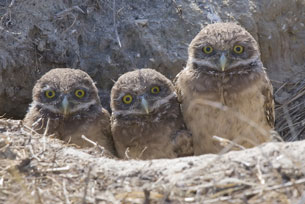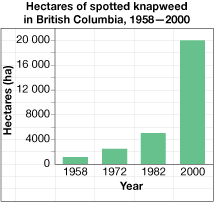Module 3 Intro
1. Module 3 Intro
1.26. Page 3
Module 3—Ecosystem Diversity
 Read
Read
intraspecific competition: competition between members of the same populations (species) for a limited resource
exotic species: a species that is not native to an area and has been introduced, in most cases, by humans
introduced species: a species that is not native to an area and has been introduced, in most cases, by humans
interspecific competition: competition for limited resources among members of different species
Competition for resources—like food—will limit the size of any population. When there is no more food, members of the same species must compete for food. This will cause birth rates to decrease and death rates to increase, so the population decreases in size. This competition between members of the same species is called intraspecific competition.
Competition can occur between a native species and exotic species that have been introduced to an ecosystem. The introduction of exotic species or alien species is a problem around the world. Populations of exotic species can get out of control since these species do not have any natural predators or diseases to limit their populations. Some exotic species are introduced on purpose and others arrive by mistake. These introduced species can have a serious impact on the native ecosystem, since the introduced species may have a niche similar to the niche of a native species. This will cause competition. This is an example of interspecific competition, and this competition will limit the population size of the native species.
An Exotic Species Introduced to Australia

© 2007 Jupiterimages Corporation
Did you know that Australia has the largest population of wild camels in the world? In 2005 there were an estimated 700 000 camels roaming the continent. Camels were introduced to Australia between 1840 and 1907 as a way of opening up the desert outback. Camels helped build the rail and telegraph lines and also aided in supplying remote locations. Unfortunately, camels are now harming the native landscape and competing with cattle for vegetation.
Canada is not immune to the problem of exotic species. There are an estimated 800 species of exotic plant species living in the wild—this is roughly 16% of all the plants in Canada. Some of the exotic species of plants and animals in Canada include purple loosestrife, knapweed, zebra mussels, sea lampreys, and starlings.
 Self-Check
Self-Check
SC 7. Complete this Self-Check exercise.
 Try This
Try This
TR 1. Limiting Factors
![]() Answers to TR 1 questions will be placed in the Lesson 5 Assignment.
Answers to TR 1 questions will be placed in the Lesson 5 Assignment.
Part A: Limiting Factors Facing Burrowing Owls

© Bob Blanchard/shutterstock
Read an article about the limiting factors facing burrowing owls. Create a table, a diagram, or a flow chart in the Assignment to list and explain how each biotic and abiotic limiting factor affects Alberta’s burrowing owl population. You will be assessed using the rubric provided.
4 |
3 |
2 |
1 |
|
Content Quality |
At least ten abiotic and biotic limiting factors are identified. |
From seven to nine abiotic and biotic limiting factors are identified. |
From four to six abiotic and biotic limiting factors are identified. |
Few or no limiting factors are identified. |
Organization |
The chart, diagram, or table is very logical, clear, and accurate. |
The chart, diagram, or table is mostly logical, clear, and accurate. |
The chart, diagram, or table is mostly accurate. |
The chart, diagram, or table is disorganized and inaccurate. |
Limiting Factors Effect on Burrowing Owls |
The effect of every limiting factor on the burrowing owl is explained. |
The effects of most limiting factors are explained. |
The effects of some limiting factors are explained. |
Few or no effects are explained. |
Part B: Knapweed—The Super Competitor
Weeds can become a limiting factor to other organisms when the weeds are introduced to a new environment.
- Investigate and write two paragraphs about the biology/ecology of spotted knapweed (Centaurea biebersteinii). Perform your own search to specifically answer these questions:
- How does spotted knapweed reproduce?
- What animals eat it?
- How was the plant introduced into North America?
- How does spotted knapweed spread?
- What problems does it cause in North American ecosystems?
- Why does spotted knapweed not cause the same damage to its native ecosystem?
Parks Canada may be a good website to explore.
5 |
4 |
3 |
2 |
1 |
|
| Questions Answered | All six questions are thoroughly and accurately answered. | All six questions are answered. |
Four to five questions are answered. |
Two to three questions are answered. |
One or no questions are answered. |
Answer the following questions using the graph provided.

Graph Analysis
- Study the graph.
- Describe what has happened to the population of spotted knapweed since its arrival in British Columbia.
- Predict the number of hectares that will be covered by spotted knapweed in 2020. Explain your prediction.
- Explain why some introduced species can become so invasive and damaging to native species and ecosystems.
- Populations of spotted knapweed are present in Alberta. How could spotted knapweed spread throughout the province?